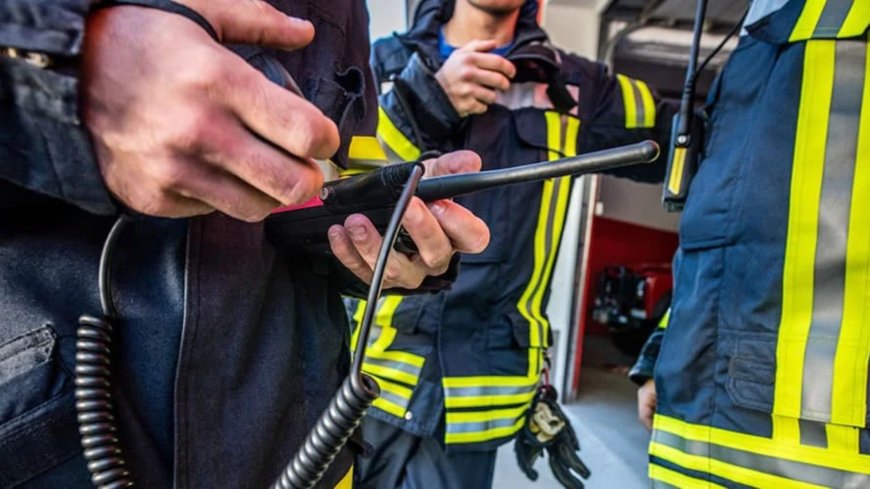Smart Environments: Temperature and Humidity Monitoring System Combined with Antenna Monitoring System
Discover how combining a temperature and humidity monitoring system with an antenna monitoring system creates smarter, safer environments. Learn how this integration enhances performance, reliability, and real-time response.

In todays rapidly advancing world, buildings and infrastructure are becoming smarter. From hospitals and schools to data centers and communication hubs, facilities now rely on automated technologies to operate more efficiently and safely. A smart environment uses advanced sensors and real-time data to monitor conditions, manage resources, and prevent problems before they occur. Two key technologies that play a vital role in this transformation are the temperature and humidity monitoring system and the antenna monitoring system.
These systems help track environmental conditions and ensure the reliability of critical communication networks. When combined, they create a powerful solution for maintaining safety, performance, and stability in modern spaces.
What Is a Temperature and Humidity Monitoring System?
A temperature and humidity monitoring system is a sensor-based solution used to continuously measure environmental conditions in real time. These systems are essential in environments where temperature and moisture levels directly impact operations, product quality, or safety.
Common places where these systems are used:
-
Data centers and server rooms
-
Healthcare and pharmaceutical facilities
-
Food storage and manufacturing units
-
Cleanrooms and laboratories
-
Museums and archives
By using these systems, facilities can quickly detect and respond to changes in temperature or humidity, reducing the risk of equipment damage, spoilage, or health concerns.
Key benefits:
-
Ensures consistent environmental conditions
-
Prevents equipment overheating or condensation damage
-
Improves energy efficiency through automated HVAC control
-
Helps meet industry compliance standards
-
Sends alerts if thresholds are breached
This system acts as the first line of defense against temperature- or moisture-related failures.
Understanding the Antenna Monitoring System
While environmental monitoring focuses on the physical atmosphere, the antenna monitoring system focuses on communication. These systems are used to track the performance of antennas, ensuring they operate without interruption.
Antennas are a critical part of wireless networks, radio systems, emergency communication systems, and more. Any failure or misalignment can cause serious communication issues.
Functions of an antenna monitoring system:
-
Monitors signal strength and quality
-
Detects physical issues such as disconnection or misalignment
-
Tracks changes in antenna load or VSWR (voltage standing wave ratio)
-
Sends alerts if problems are detected
-
Keeps communication networks functioning reliably
In facilities where antennas are used for public safety, wireless data, or emergency alerts, this system is essential for preventing downtime.
Why Combine These Two Systems?
Individually, each system brings strong benefits to any building or facility. However, when used together, the temperature and humidity monitoring system and the antenna monitoring system form a complete smart solution. Together, they protect both the physical environment and the digital infrastructure.
For example, extreme heat or humidity can impact the performance of antennas or the electronics that support them. Similarly, a drop in signal strength might suggest overheating or physical interference caused by environmental changes. By monitoring both environmental and signal conditions, facilities can stay ahead of potential problems.
Benefits of combining both systems:
-
Better protection of sensitive communication hardware
-
Faster response to environmental issues that impact antenna performance
-
Unified alert systems for easier management
-
Improved reliability in mission-critical facilities like hospitals or data centers
-
Streamlined maintenance by linking environmental data with network health
This combined approach leads to smarter, more responsive, and safer environments.
Real-World Applications of Integrated Monitoring
Many industries benefit from this combination. Whether managing a secure communication network or preserving sensitive inventory, having both systems in place ensures all aspects of a facility are covered.
Use cases include:
-
Telecom towers: Maintain both temperature-sensitive equipment and antenna alignment
-
Broadcast stations: Ensure uninterrupted radio or TV signal delivery
-
Pharmaceutical storage: Protect temperature-controlled drugs and ensure data transmission to cloud systems
-
Smart buildings: Optimize indoor air quality while maintaining internal communication networks
-
Military or emergency command centers: Safeguard antennas and servers during intense operational periods
These systems support not just daily operations, but also long-term planning and resilience.
How the Technology Works Together
Modern monitoring systems can be managed through a single platform. Sensors installed throughout a facility report data back to a central system, which can be accessed remotely or through mobile apps. This central platform collects data from both the temperature and humidity monitoring system and the antenna monitoring system, allowing facility managers to see trends, set alerts, and make informed decisions.
Features of integrated platforms:
-
Dashboard with real-time readings and trend graphs
-
Custom alerts for high/low values or signal drops
-
Remote monitoring and cloud-based data storage
-
Maintenance logs and audit trails for compliance
-
Integration with building automation systems
This kind of visibility helps teams take action before a small issue becomes a major failure.
Key Considerations When Installing These Systems
To get the most out of these technologies, its important to plan the setup properly. Each facility has unique needs depending on its layout, purpose, and risk level.
Consider the following before installation:
-
Number and placement of sensors
-
Types of antennas and their roles
-
Environmental factors like airflow, equipment density, and lighting
-
Integration options with current building systems
-
Ongoing maintenance and support plans
Working with experienced system providers ensures proper installation, calibration, and support after deployment.
Conclusion
As buildings and operations become more reliant on data and communication, maintaining both physical and network conditions becomes critical. By using a temperature and humidity monitoring system alongside an antenna monitoring system, businesses and organizations can create safer, more efficient environments.
These systems not only help protect valuable assets but also support smarter decision-making, quicker response times, and improved overall performance. Whether you're managing a high-security facility or a climate-sensitive warehouse, investing in these technologies is a smart step toward a more connected and reliable future.










































